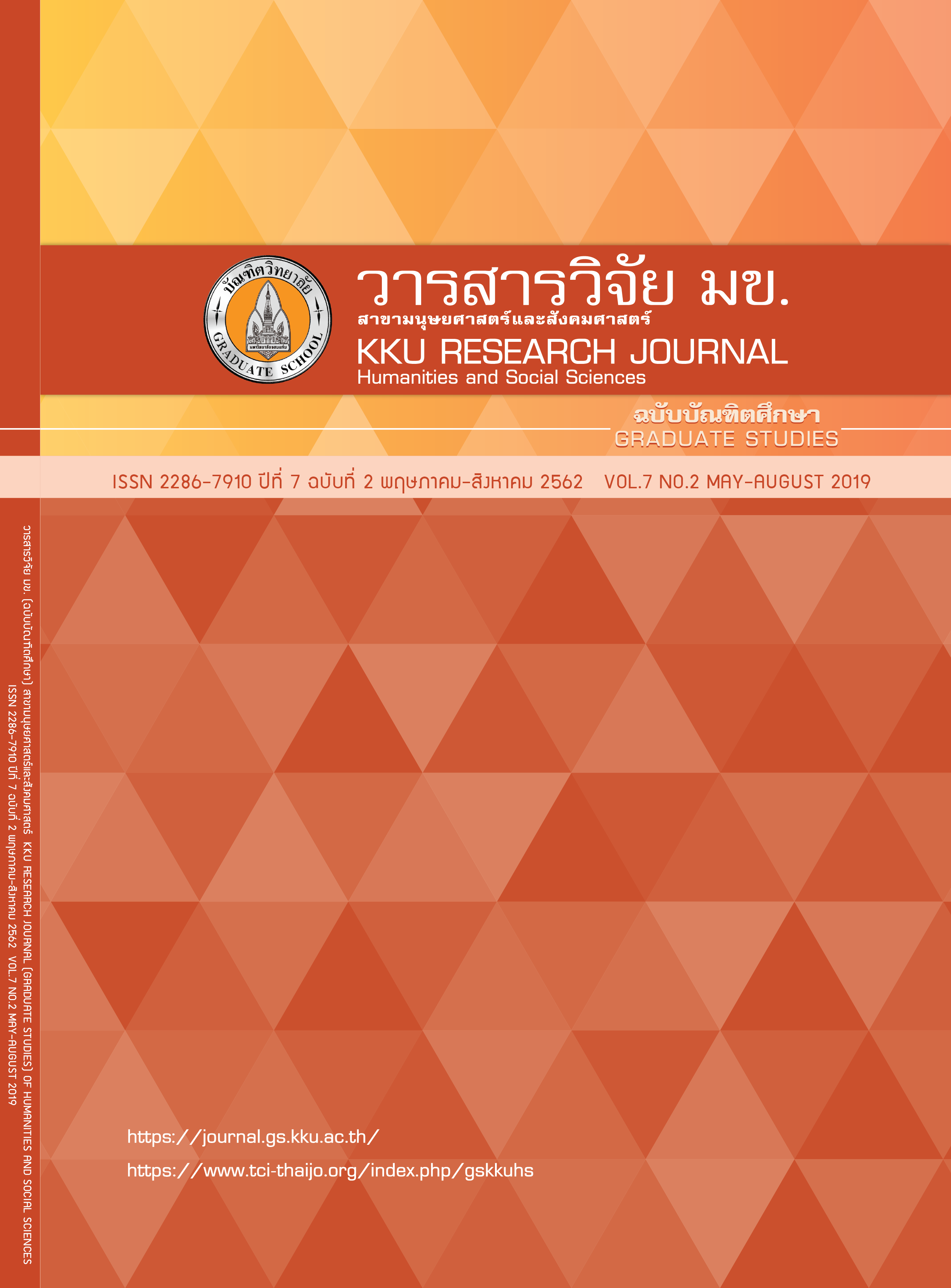Design and Development of Learning Environment to Promote Media and Information Literacy for High School Students Based on Local Knowledge
Keywords:
Media and information Literacy, Design and development of learning Environment, Designing FrameworkAbstract
Media and Information Literacy was one of the skills needed to live in the 21st century. In the context of learning, a learning environment that promotes literacy and information literacy is developed. Local knowledge for high school students by designing and developing a learning environment that can be used in the learning process of high school students. Let learners learn from learning environment to enhance media and information literacy skills and bring the ideas learned from it to develop and expand the learning to be widely and appropriately.
References
J. van Merriënboer, and M.P. Driscoll. Handbook of research on educational
communications and technology third edition. Bloomington: Association for
educational communications and technology; 2008. p. 525-536.
2. Sumalee C. Instructional design: principle and theories. Khon Kaen:
Khon Kaen University; 2014.
3. United Nations Educational, Scientific and Cultural Organization (UNESCO).
Media and information literacy curriculum for teachers. Paris:
The organization; 2011.
4. United Nations Educational, Scientific and Cultural Organization (UNESCO).
Towards media and information literacy indicators. Paris: The organization; 2011.
5. Wilasinee A. MIL media literacy and information literacy for teacher [Internet].
2011. [updated 2011; cited 2016 Feb 2]. Available from:
http://www.thaihealth.or.th/.
6. Aree C. Information literacy behaviors of Srinakharinwirot University
students [PhD thesis]. Bangkok: Srinakharinwirot University; 2012. Thai.
7. Klein JD, Richey RC. Design and development research methods,
strategies, issues. New Jersey: Lawrence Erlbaum Associates; 2007.
8. Hill J, Hannafin M. Teaching and learning in digital environments:
the resurgence of resource-based learning. Educational technology
research and development. 2001; 49(3): 37–52.
9. Jaijing J. The Effect of web-based learning environments based on
constructivism on information search on the internet for fifth-grade students
[MSc thesis]. Khon Kaen: Khon Kaen University; 2006. Thai.
10. Jonassen D. Designing constructivist learning environments.
Instructional-design theories and models volume II; 1999.
p. 215-239.
11. Chanya S. Development of constructivist web-based learning environments
to development critical thinking in science strand substance 2: life and environment
for Mathayomsuksa III students at Sichomphusuksa School in Khon Kaen Province
[MSc thesis]. Khon Kaen: Khon Kaen University; 2014. Thai.
12. Teerawat S. The effect of constructivist web-based learning environments
developed to enhance students’ divergent thinking on the topic of "social problems"
for undergraduate students [MSc thesis]. Khon Kaen: Khon Kaen University;
2007. Thai.
13. Weerayuth M. The effect of constructivist web-based learning environment to
enhance learner’s problem solving in introduction to computer for Mattayomsuksa 3
students [MSc thesis]. Khon Kaen: Khon Kaen University; 2014. Thai.




